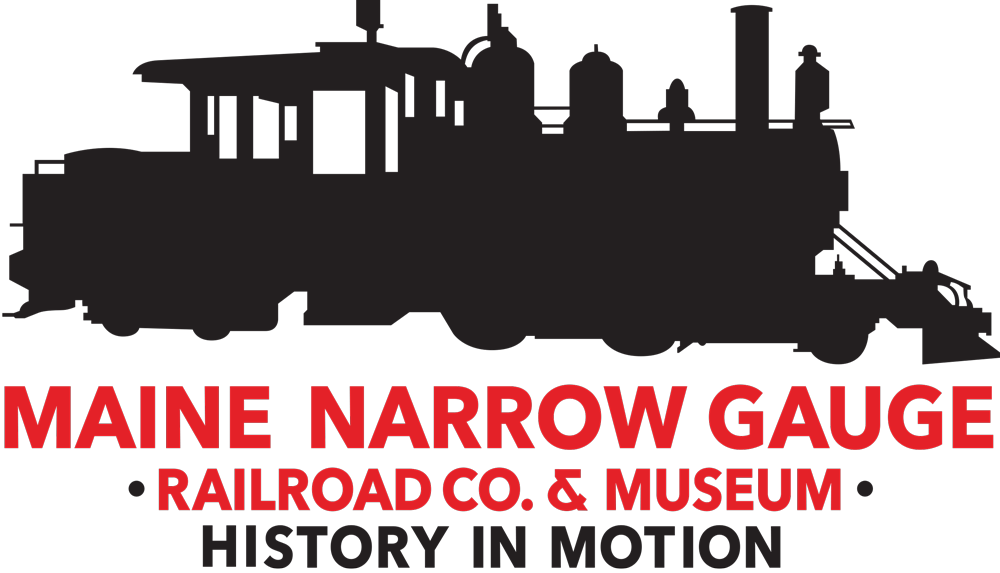The museum has a large collection of historic equipment from Maine’s narrow gauge railways. Below is a listing of locomotives, passenger coaches, combines, cabooses, box cars and other miscellaneous equipment in the museum’s collection.
Steam Locomotives
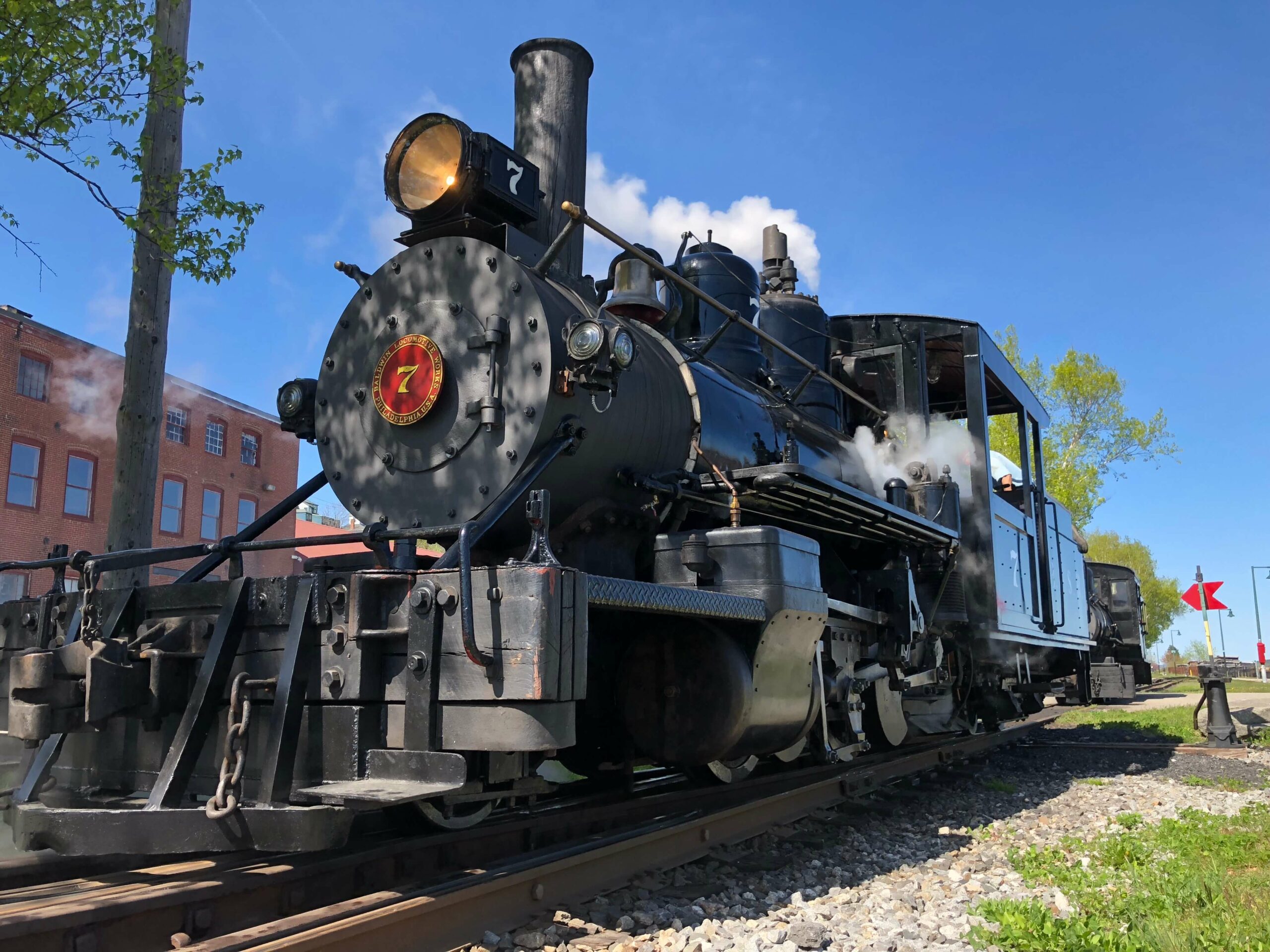
Bridgton & Saco River #7
BUILT: 1913
BUILDER: Baldwin Locomotive Works, Philadelphia, PA
ABOUT: #7 and Bridgton & Saco River Railroad #8 were the last engines to operate on the Bridgton and Harrison Railroad, the successor to the Bridgton and Saco River. Following nearly 50 years of service at the Edaville Railroad in Carver, MA, engine #7 returned to its home state of Maine. It underwent a lengthy restoration that lasted nearly 10 years, and returned to service on the Maine Narrow Gauge in May 2018.
#7 is in steam in Portland on select dates in 2025. Stay tuned for more info.

Bridgton & Saco River #8
BUILT: 1924
BUILDER: Baldwin Locomotive Works, Philadelphia, PA
ABOUT: Bridgton & Saco River #8 was the last and largest locomotive built for the Bridgton & Saco River Railroad. Like #7, it was purchased by the Edaville Railroad following its retirement from the Bridgton & Harrison Railroad (successor to the Bridgton & Saco River). It operated at Edaville in Carver, MA for nearly 50 years before returning home to Maine and steaming on Maine Narrow Gauge Railroad & Museum rails. It is currently out of service and is housed offsite.
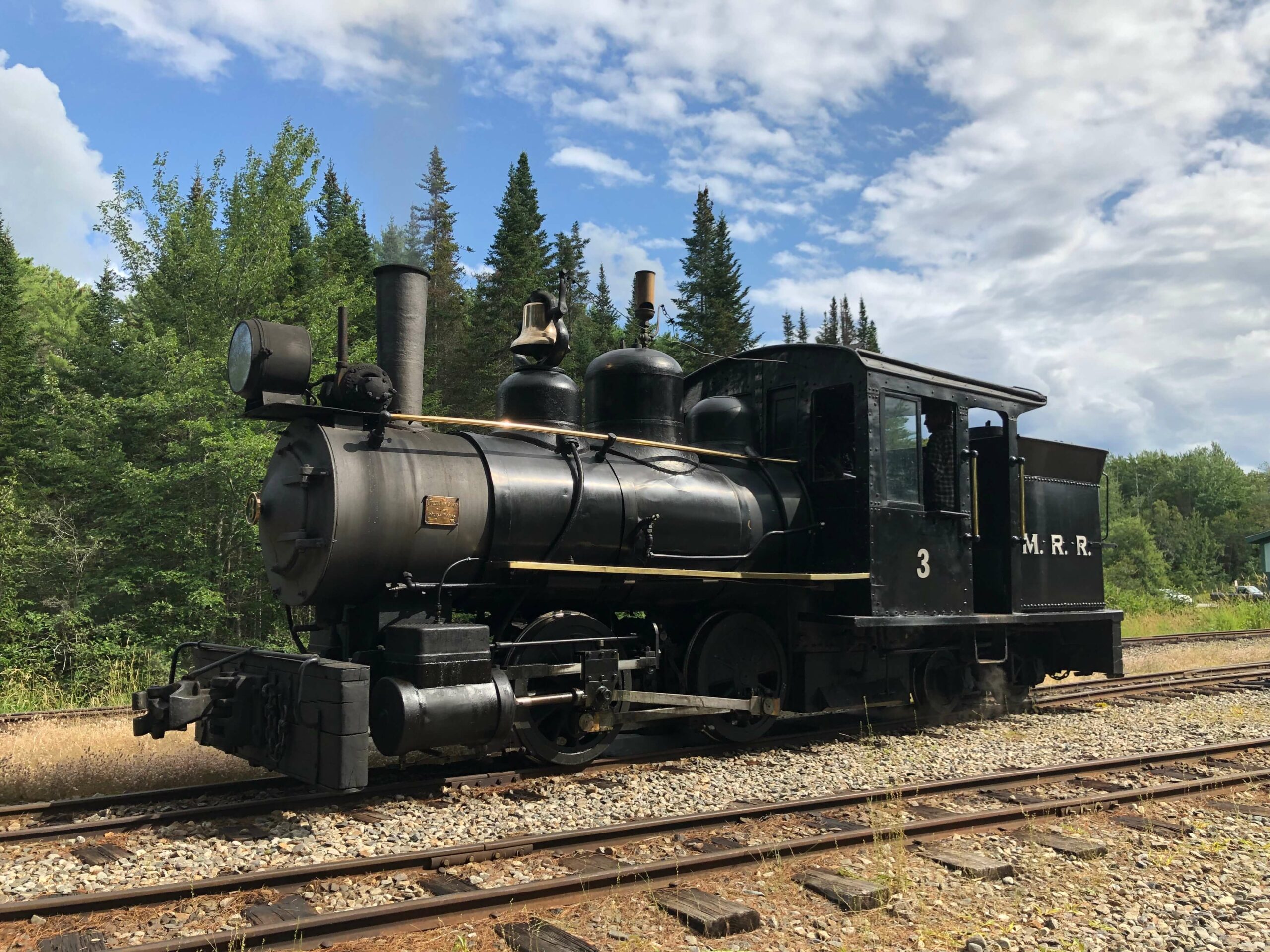
Monson Railroad #3
BUILT: 1913
BUILDER: Vulcan Iron Works, Wilkes-Barre, PA
ABOUT: Monson #3 ran from Monson Junction to Monson until the railroad's demise in 1943. Following the Monson Railroad's closure, #3 steamed at the Edaville Railroad in Carver, MA for nearly 50 years. It was part of the original collection of Edaville equipment that came to Portland following the original Edaville Railroad's closure. #3 is a frequent visitor to peer railroads in New England when not steaming in Portland. Locomotive #3 is currently in operation at the reestablished Edaville Railroad.
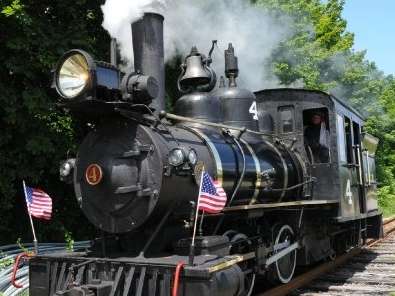
Monson Railroad #4
BUILT: 1918
BUILDER: Vulcan Iron Works, Wilkes-Barre, PA
ABOUT: Monson #4 is very similar to #3 and was the last locomotive built for the Monson Railroad. Locomotive #4 was taken out of service in the spring of 2015. It is awaiting its FRA 15-year rebuild, and is currently housed offsite.
Diesel Locomotives
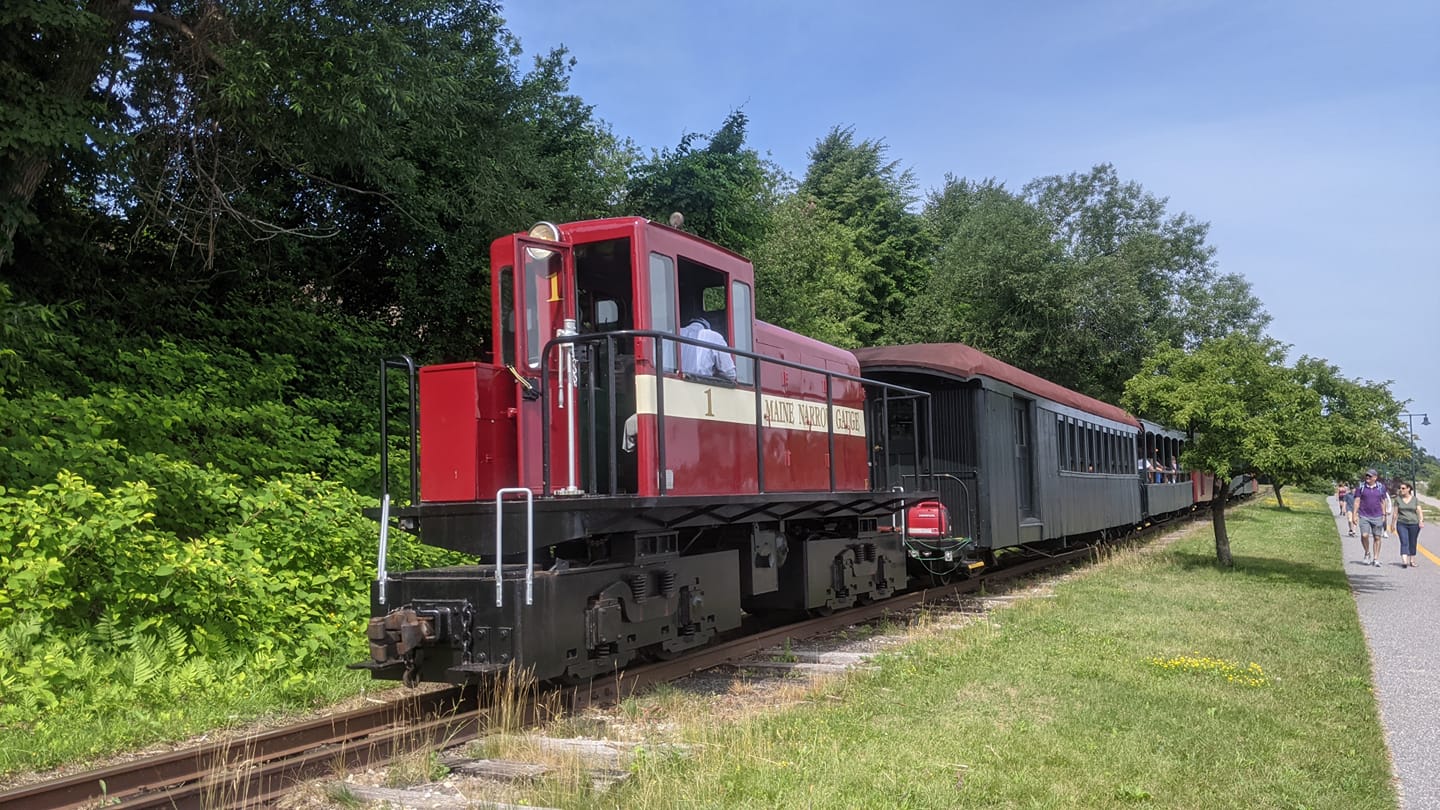
#1 (Whitin Machine Shop/Edaville Railroad)
BUILT: 1949
BUILDER: General Electric Co., Schenectady, NY
ABOUT: Our diesel #1 was one of three industrial narrow gauge diesels designed for the very narrow clearances at the Whitin Machine Shop, a manufacturer of knitting and woolen mill machinery. Only 50 inches wide when built (now 84 inches with walkways), these diesels were used to haul dump, flat, and gondola freight cars. They were phased out while still quite new and sold to a Worcester, MA scrap dealer. Two of these units were later sold to the Edaville Railroad. Edaville rebuilt these locomotives, numbered them #1 and #2, and used them to complement their steam-powered collection. Following Edaville's closure, #1 came to Maine Narrow Gauge in 1993, where it has been our primary workhouse since. Diesel #1 works most trains that are not operated by steam. Fun fact: despite its small size, it and its sister units were the largest diesels ever constructed for 2-foot gauge rails in the US!
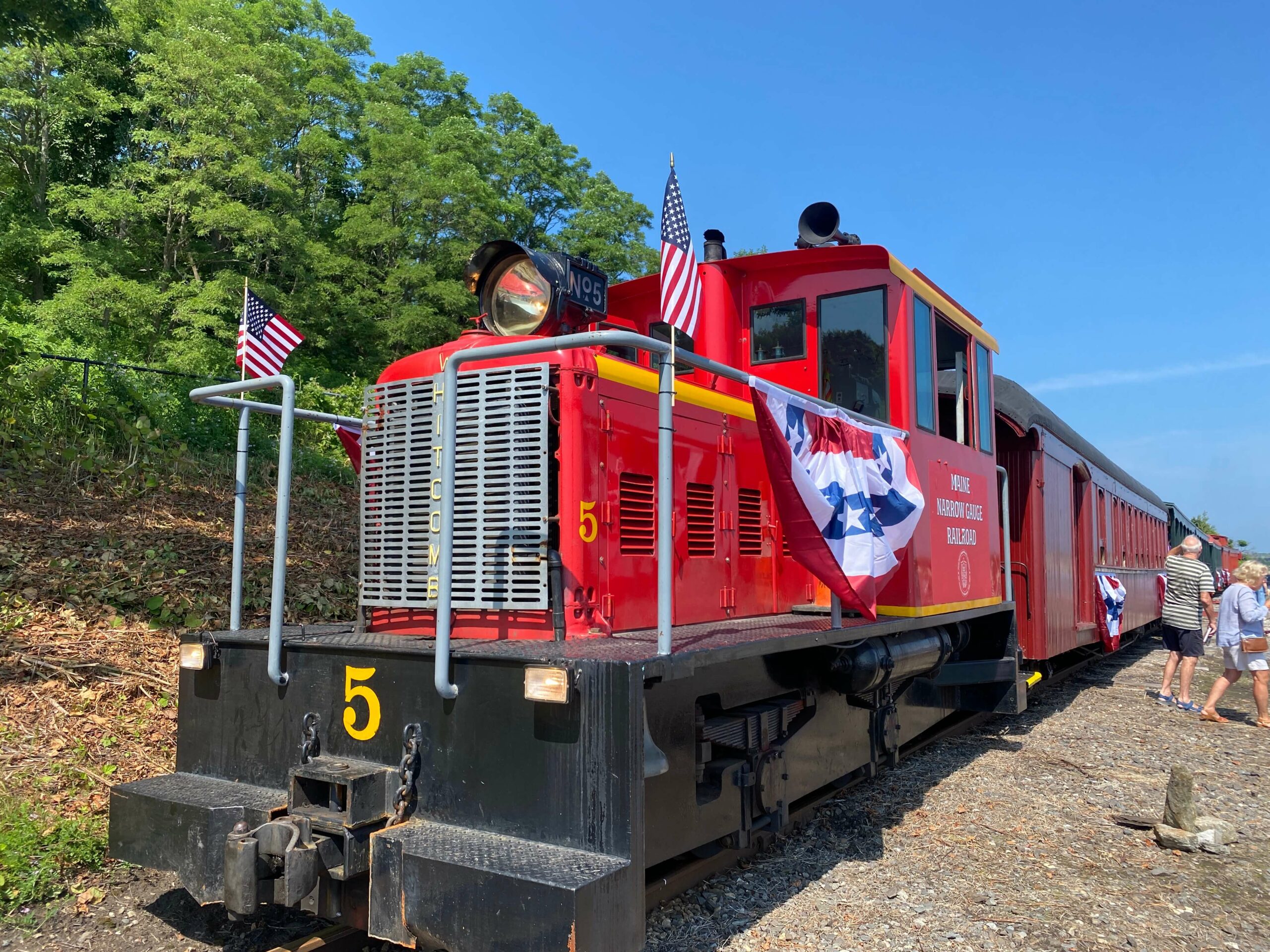
#5 (Canada Creosote/Edaville Railroad)
BUILT: 1950
BUILDER: Whitcomb Locomotive Company, Rochelle, Illinois
ABOUT: #5 was originally constructed as a 25-ton, 30" gauge locomotive for Canada Creosote. #5 served Canadian creosote manufacturers, including Domtar in Edmonton, Alberta and Trenton, Ontario, until 1993. #5 was regauged to 24" and lovingly restored by volunteers. #5 was acquired by the Edaville Railroad in 1998. It is operated on loan to Maine Narrow Gauge.
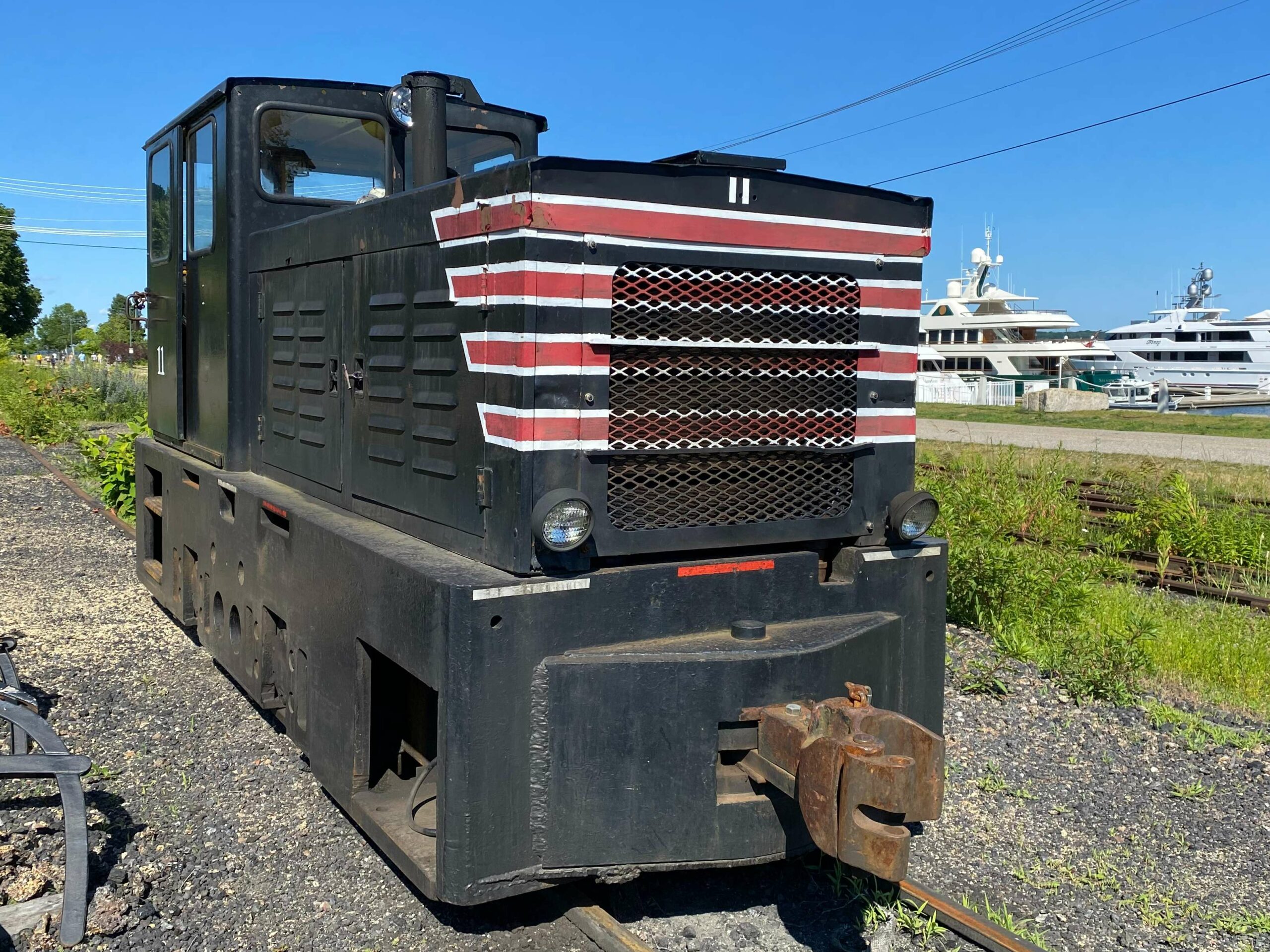
#11
BUILT: 1975
BUILDER: Fate Root Heath Co., Plymouth, OH
ABOUT: This small but mighty locomotive came to Maine Narrow Gauge from the Pine Creek Railroad in New Jersey. The drive is a combination hydraulic torque converter and mechanical transmission to control speed and power changes. It was restored with much effort by Gerry Bagley. #11 is operational as a switcher and is often seen on our work trains. #11 provides backup power for our trains if needed.
Passenger Coaches
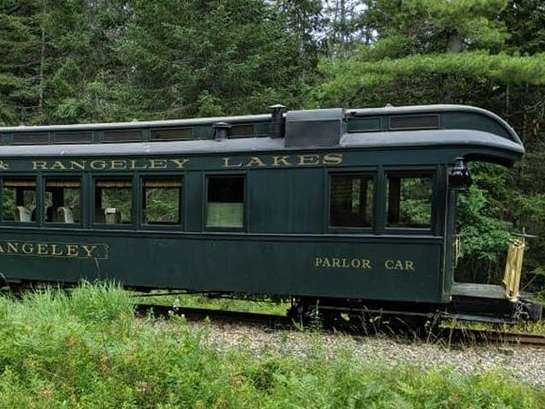
Sandy River & Rangeley Lakes Parlor Car #9 "Rangeley"
BUILT: 1901
BUILDER: Jackson and Sharp, Wilmington, DE
ABOUT: The "Rangeley" was the sole two-foot "parlor" car ever built in the United States and was used only in the summer by the Sandy River & Rangeley Lakes Railroad. Passengers of means paid an extra fee to ride in this luxury coach on the railroad's full route from Farmington to the Rangeley Lakes House, a posh hotel with its own station. The car featured plush swivel seats, a smoking section, a surprisingly roomy restroom, and other unusual amenities. The car is on display at the Wiscasset, Waterville and Farmington Railway Museum.

Bridgton & Saco River Coach #15: Pondicherry
BUILT: 1882
BUILDER: Laconia Car Company, Laconia, NH
ABOUT: Coaches #15, known as the Pondicherry, and #16, known as the Mount Pleasant, are almost twins. They are authentic from the Bridgton & Saco River Railroad, and ran at the Edaville Railroad after the Bridgton & Saco River closed. #15, Pondichery, is currently undergoing a complete restoration in Maine Narrow Gauge's Restoration Shop.

Bridgton & Saco River Coach #16: Mount Pleasant
BUILT: 1882
BUILDER: Laconia Car Company, Laconia, NH
ABOUT: Mount Pleasant, a twin of the coach Pondicherry, is authentic from the Bridgton & Saco River Railroad, and ran at the Edaville Railroad after the Bridgton & Saco River closed. #16 is frequently seen on our daily service trains and on the Polar Express during the holiday season.
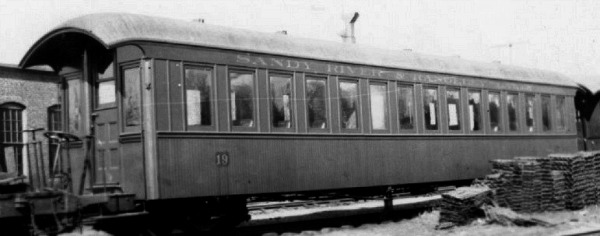
Sandy River & Rangeley Lakes Coach #19
BUILT: 1890
BUILDER: Billmeyer and Small, York, PA
ABOUT: Originally built as #2 for the Phillips & Rangeley Railroad, the coach is in storage awaiting restoration.
Combines
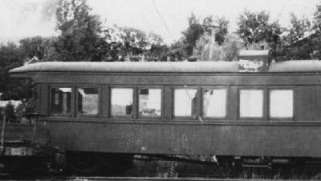
Sandy River & Rangeley Lakes Combine #14
BUILT: 1903
BUILDER: Jackson and Sharp, Wilmington, DE
ABOUT:Originally built as #3 for the Franklin and Megantic Railroad, this combine became Sandy River & Rangeley Lakes #14. It was badly damaged in a fire believed to have been caused by an over-heated station stove at Kingfield in April 1929. The rebuilt car lost its clerestory roof and received a substitute curved "duck-bill" roof. #14 was frequently used as a waycar "caboose," carrying passengers and express packages in mixed train service on tracks between Farmington, Phillips, and Carrabasset during the last few years of the Sandy River & Rangeley Lakes' existence.
After the line's closure, it was put on private residential display by a family in Strong. It came to the Edaville Railroad in 1947 in remarkably good condition. It was rehabbed at Edaville and came to Maine Narrow Gauge in 1993 with most of its original features (except seats), including brake rigging and its stove. It is currently housed at the Wiscasset, Waterville and Farmington Railway Museum.
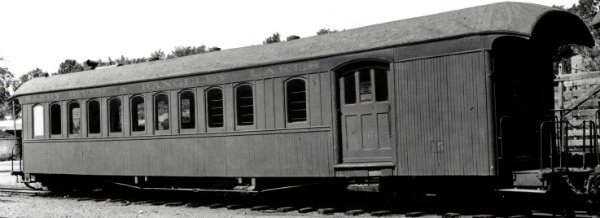
Sandy River & Rangeley Lakes Combine #15
BUILT: 1890
BUILDER: Billmeyer and Small, York, PA
ABOUT:Billmeyer and Small built five cars for the Phillips & Rangeley Railroad in the early 1890s: three coaches, one baggage-RPO (railway post office), and this combination car. All had round roofs and wood-sheathed side panels. One coach was destroyed by fire at Greens Farm in 1904, and parts from it were used by the Sandy River Railroad to build Caboose #12.
This car was numbered 15 while in service on the Sandy River & Rangeley Lakes Railroad. After the line's abandonment, the body was left on the bed of a former siding at South Strong. It was salvaged in somewhat decrepit condition for the Edaville Railroad in 1947 and eventually was rebuilt as Coach #4. The side doors of the baggage compartment were removed, the sides opened up with windows, and side bench seats were added. The coach section retained twelve walkover seats.
After coming to Maine Narrow Gauge, the car was restored, given its number back of #15, and is now active on our trains.
Cabooses
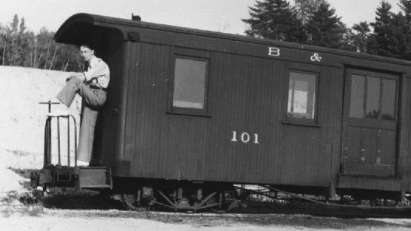
Bridgton & Saco River Caboose #32/101
BUILT: 1882
BUILDER: Laconia Car Company, Laconia, NY
ABOUT: Originally caboose #32, the car was renumbered to #101 in 1892. The cupola was destroyed and never replaced after allegedly hitting a low-hanging guy wire in 1898. It became Bridgton & Saco River caboose #101 in 1930 and was sometimes used as a baggage car. It was the only caboose ever owned by the Bridgton & Saco River/Bridgton & Harrison Railroad. It was moved to the Edaville Railroad in 1946. After being acquired by Maine Narrow Gauge in 1993, it was restored to its original appearance. It is currently on display at the Wiscasset, Waterville and Farmington Railway Museum.
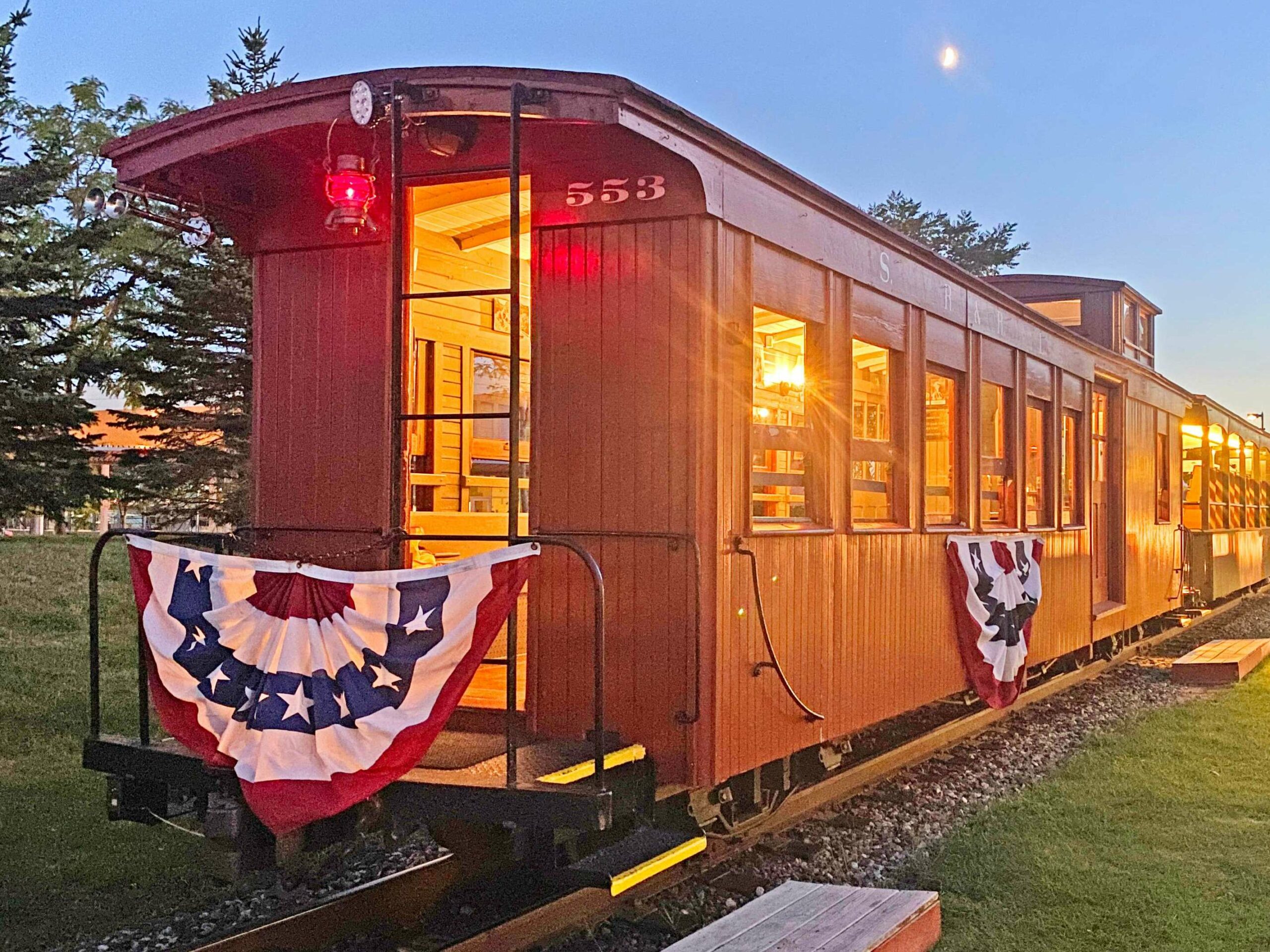
Sandy River & Rangeley Lakes Caboose #12/553
BUILT: 1904
BUILDER: Sandy River Railroad
ABOUT: The Sandy River Railroad built this caboose from hardware salvaged from the Phillips & Rangeley Railroad Coach #3, which was destroyed by fire at Green's Farm earlier that year. Longer than any other Sandy River caboose, it was used as a waycar-caboose and spent most of its time on the Phillips & Rangeley branches of the railroad. Almost ten feet longer than #551, and six feet longer than #557, this Sandy River caboose is one-of-a-kind.
Following the merger that created the Sandy River & Rangeley Lakes Railroad, #12 became #553. After it was retired from rail service, it was used as a bunkhouse in Phillips. The Edaville Railroad purchased it in 1977 and returned it to rail service for the first time in many decades. This is one of the cabooses that moved from Edaville to Portland in September 1993. It has been fully restored by the artisans of Maine Narrow Gauge and is in active service. Considering its history, it is remarkable that it is still operating.
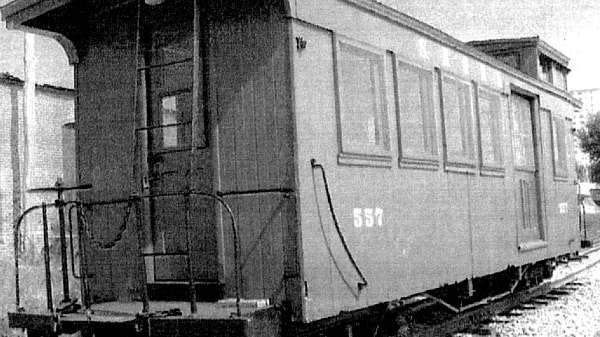
Sandy River & Rangeley Lakes Caboose #557
BUILT: 1913
BUILDER: Maine Central Railroad, Waterville, ME
ABOUT: Caboose #557 is one of three end-cupola cabooses built in 1913 for the Sandy River & Rangeley Lakes Railroad. It was purchased by a private individual following the Sandy River & Rangeley Lakes' closure, who kept it in great condition. It was purchased in 1945 by the Edaville Railroad and was in regular use on passenger trains there. Steel platform modules were added to the caboose's ends, and equipment such as the stove was removed to provide additional seating space. This caboose is now currently on display next to our right-of-way, near our station in Portland.
Box Cars
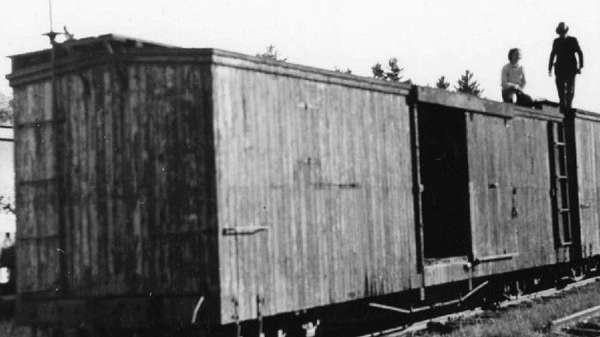
Bridgton and Saco River Railroad Box Cars #50, #52, #56, #57, #60, #62, #70
BUILT: 1889-1905
BUILDER: Portland Company, Portland, ME and Bridgton and Saco River Railroad
ABOUT: In 1922 the Bridgton and Saco River Railroad had 22 boxcars. In 1940 several of the cars were salvaged to raise money for the line. Most of the cars were damaged due to vandalism, the weather, and pilferage while they were stored at Bridgton Junction and Bridgton after the line closed in 1941. The boxcars in our collection are currently stored on the museum property.
Boxcar #62 is currently undergoing restoration by Maine Narrow Gauge volunteers and staff!
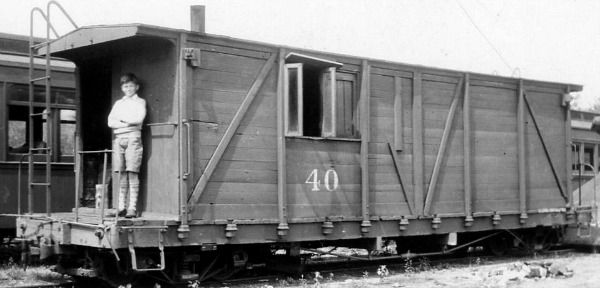
Bridgton and Saco River Railroad Flanger #40
BUILT: 1913
BUILDER: Maine Central Railroad, Portland, ME
ABOUT: The flanger was built using an 1882 stake-bodied flat car built by Laconia Car Company and was given the flat car's original number. A flanger would follow a snow plow and clear the area between the rails, scraping the top of the track, and using a spreader to widen the right of way. The flanger is presently stored at our Gray location.
Miscellaneous Items
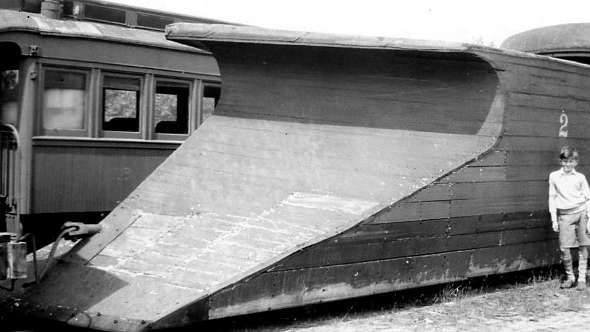
Bridgton and Saco River Railroad Snow Plow #2
BUILT: 1900
BUILDER: Bridgton and Saco River Railroad
ABOUT: This wedge plow has a wood-beamed frame and a steel blade. Wedge plows pushed snow to both sides of the right-of-way and were used on single-line tracks. All of Maine's narrow gauge lines were single track and used only wedge plows for snow removal. The snow plow is stored on the museum property awaiting restoration.
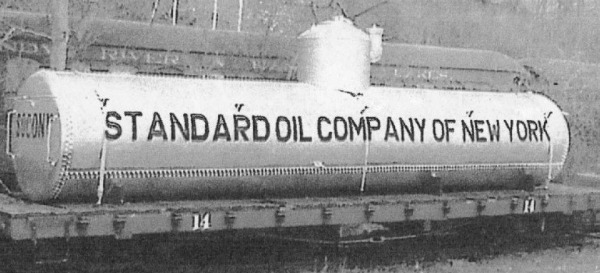
Bridgton and Saco River Tank
BUILT: 1903
BUILDER: Portland Company, Portland, ME
ABOUT: In the early 1900s Standard Oil shipped oil to Bridgton via the Bridgton and Saco River Railroad which had Maine's only two-foot gauge tank cars. The oil from one standard gauge car would fill two narrow gauge cars. The railroad built a storage tank on its property, and oil was delivered locally using a 700-gallon horse-drawn tank. The tank is stored on the museum property in Gray.
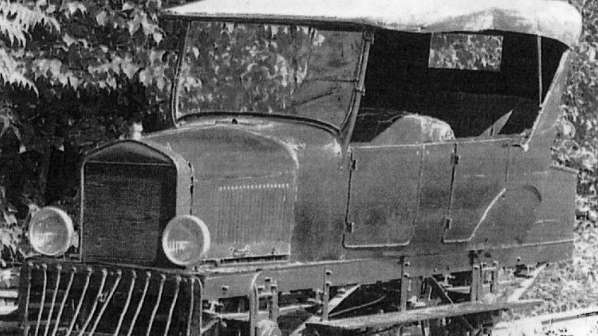
Sandy River and Rangeley Lakes Inspection Car
BUILT: 1925
BUILDER: Sandy River and Rangeley Lakes Railroad, Phillips, ME
ABOUT: Built with parts from two earlier Model T Ford track cars, the car was primarily as an inspection car by Superintendent Orin Vose. It was commonly known as the "Vose inspection car". The car is currently being restored by Maine Narrow Gauge volunteers.

Sandy River and Rangeley Lakes Rail Bus #4 / Bridgton and Harrison Rail Bus #3
BUILT: 1925
BUILDER: Sandy River and Rangeley Lakes Railroad, Phillips, ME
ABOUT: The Sandy River and Rangeley Lakes Railroad began building rail cars to use in place of steam powered trains as passenger service on the line declined. Rail Bus #4, the last remaining rail bus in existence, was built with an REO truck frame and motor. In 1936, after the railroad had closed, the bus was purchased by Edgar Mead and leased to the Bridgton and Harrison Railroad for $1 a year. It then came to the Edaville Railroad for the better part of the next 50 years. The Railbus was brought up to Portland in the early 1990s, where it occasionally would carry passengers along the waterfront, as well as represent Maine Narrow Gauge at fairs and exhibitions in the region.
Reproduction Cars
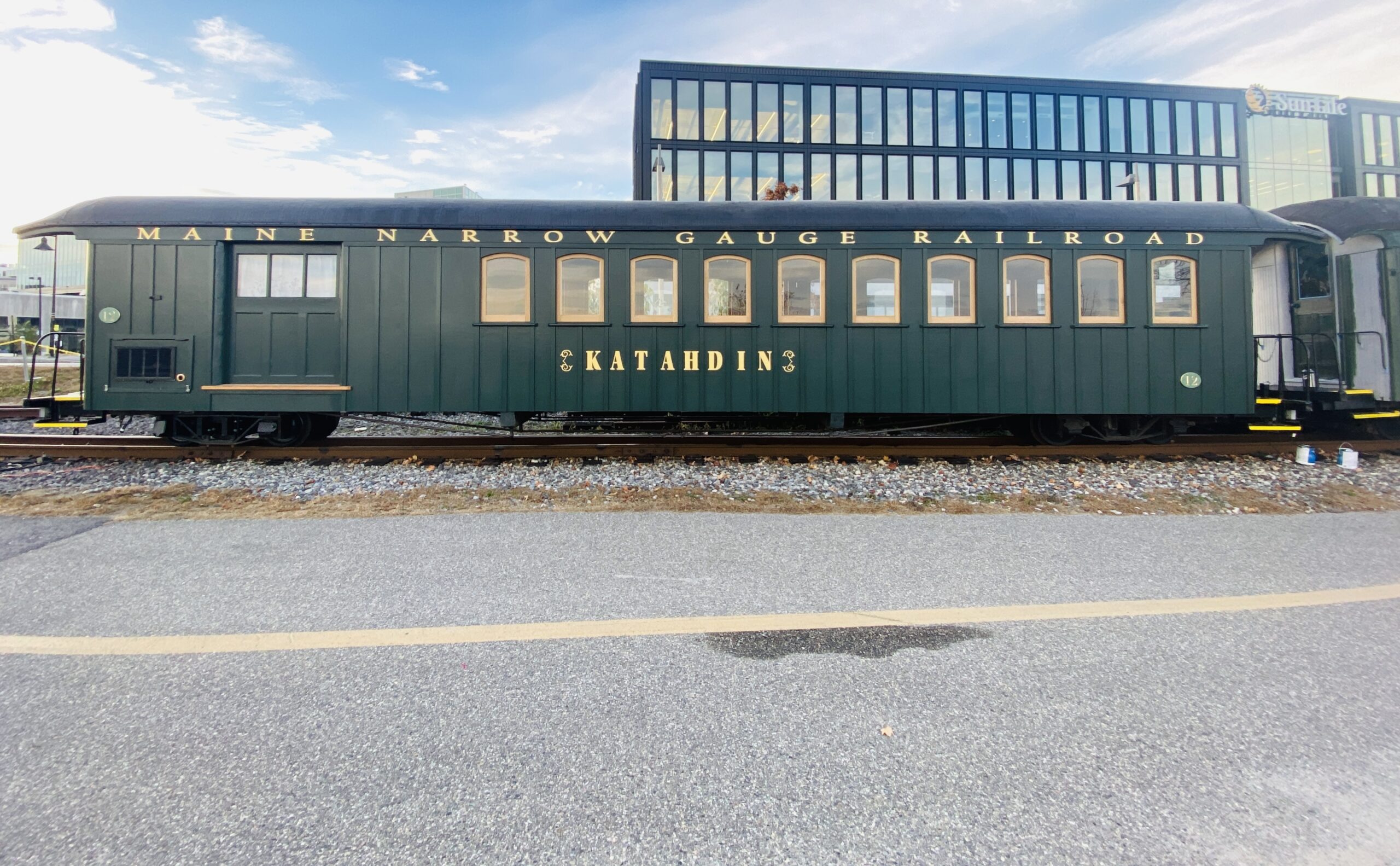
Combine #12 "Katahdin"
BUILT: 1958
BUILDER: Edaville Railroad, South Carver, MA
ABOUT: This combination car was modeled on a Billmeyer & Small car built in the 1880s for the Phillips and Rangeley Railroad. It operated at the Edaville Railroad before being acquired by Maine Narrow Gauge. It has been part of almost every passenger train throughout Maine Narrow Gauge's history, being the ADA-accessible car as well as the service car. This coach was completely restored in-house by Maine Narrow Gauge personnel in 2023. It was given the name "Katahdin," named for Maine's mightiest mountain.
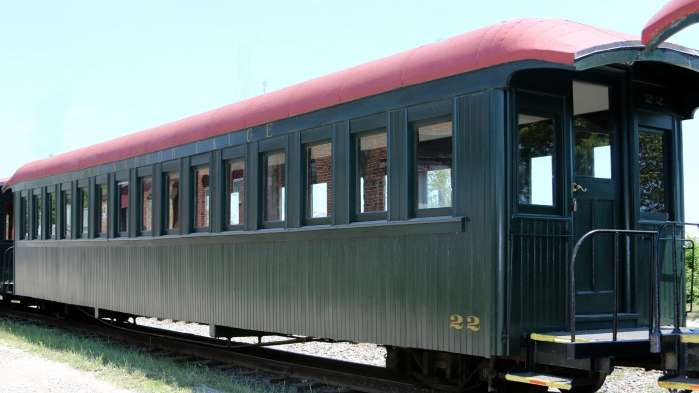
Passenger Coaches #22, #23, #24, #25
BUILT: 1958 - 1987
BUILDER: Edaville Railroad, South Carver, MA
ABOUT: These reproduction coaches were built to provide more passenger seating on the popular Edaville Railroad. They were based on coaches built by the Phillips and Rangeley Railroad and feature bench seating. Coaches #22, #24, and #25 are in use on our train. Coach #23 is currently being restored in-house by Maine Narrow Gauge volunteers and staff.
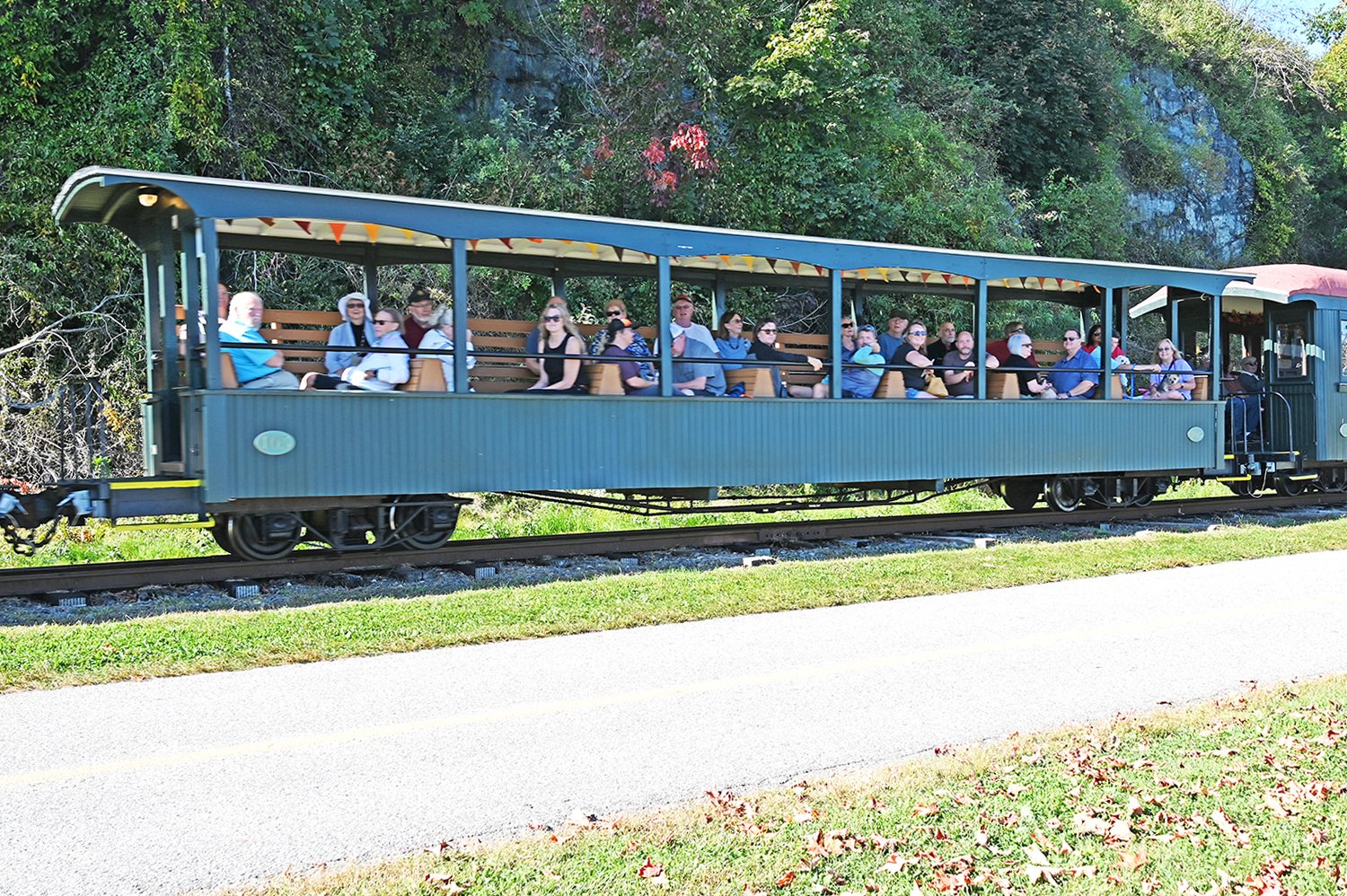
Open Cars #102 and #105
BUILT: 1960s
BUILDER: Edaville Railroad, South Carver, MA
ABOUT: Edaville built these covered open coaches to help fill their need for more passenger cars. They were built using parts from flat and box car bodies from the Bridgton and Harrison Railroad. #102 and #105 are used on our train during the warm weather.
#105 was restored in 2022 by Maine Narrow Gauge volunteers. #102 was restored in-house in 2024.
